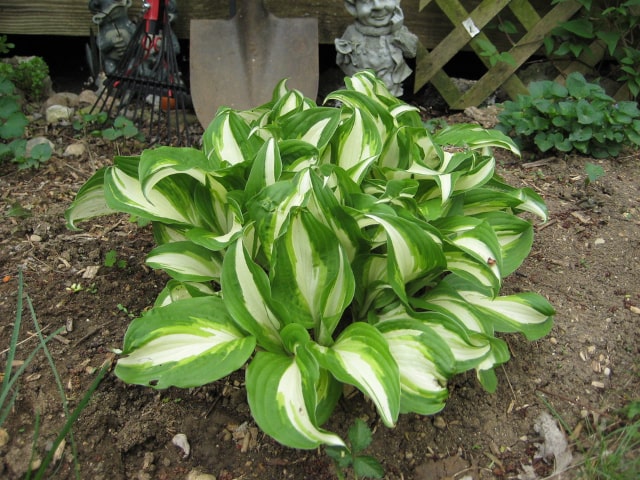
Dividing hostas is not so complicated once you are familiar with the procedure. Generally speaking, it's best to divide them early in the year so they have time to recover before they leaf out or before it gets too hot.
It's best to dig the plants up early in the spring, before they even have a chance to come up. Ideal time to do it is when you observe them breaking in the ground.
Preparation
The easiest method is to use a stainless steel spade and carefully dig around the plant. It's interesting to note that these spades are much easier to use than steel spades. Stainless steel doesn't rust and it remains polished. The polish and smoothness make the digging process much easier.
To make the whole process easier, dig around the plant and then slice under the plant by repeated stabbing. It's best to do it about 4 inches (or more) horizontally below. This method works better than simply trying to pry the hostas out. Prying hostas out can result in a broken tool handle, so this is a much better method.
After this, take a high pressure hose and wash all of the soil off. It's best to use a garden hose with a nozzle. You need a nozzle so you can clearly see the growing points.
Divisions
The next step is to take a butcher knife and carefully cut between the growing points. It's also good to tug them apart as much as you can. This will minimize the cutting and prevent damage to the roots. If they are growing widely apart it's easy to do it. Sometimes, they grow very close together so you need to be more careful.
After you dig up the hostas, you can start dividing them. It's best to add 2 to 4 divisions for small and medium plants. For large plants with huge divisions it's sometimes enough to add just one. However, the number of divisions is up to you.
When you're done with this process you can pot them up even if they have a very small amount of roots. When you pot them, you should keep them in the shade for a few months. Water them well and they will reroot with a success.
When repotting, make sure to place them at the same depth as they were before. However, make sure to place them a bit under the soil line. It's useful to use quart pots for this. As long as they are potted well and kept moist, hostas can recover rapidly. Make sure to never let them dry out during this time. It's also important to keep them in the shade.
Dividing During the Summer
If you want to divide hostas during the summer, it's possible to do it, but you need to take some things into account.
It's important to dig up a plant with as many roots as possible. It's important to wash all the soil off the plant so you can see divisions clearly. This will help you greatly because you will be able to see where to cut the plant apart.
Again, it's completely up to you to decide how much you want to divide the plant. In case you divide too much or if a division has only a few roots, you can cut off some of the leaves and pot it up. Put it in the shade and water regularly to make it reroot. It's important to know that you can reroot hostas successfully even if a division has only a few bumps for roots. However, in order for this to work, you need to limit the number of leaves and to keep a division moist, in a shaded area.
It's best to replant divisions immediately. Don't forget to water them well. You should water them every few days for the first month or so. It may seem like too much but hostas can't easily be damaged by excessive watering.
In case it's very hot during the summer, pot them up and move them into the shade. You can plant them again in their permanent spot in late August. Remember to never take a hosta that's in the deep shade and move it to a place with more sun during the summer heat. Sunburn can kill your hostas pretty fast.
Factors to Consider
There are several important factors to consider when dividing hostas. It's important to consider all of them before you decide what to do. The main factors you need to consider are:
1. Best time for division
The time is calculated based on their growth cycle and not by calendar date. What you need to know about hostas is that they send up new top growth from stored energy in the rhizome. Once it achieves this top growth, the plant begins making new roots to support this new growth. If conditions are good, it will grow some more. After this, the plant settles down and stores energy for the next cycle.
Different species have some variations. For example, some of them have multiple cysles in a season or continuing top growth (plantagenia). However, the above described is true for most hostas. That is a basic cycle you will see happening and the one you can use to calculate the best time to divide your plants.
2. Environment
Hostas easily adapt to their environment. For example, they will make different leaves in the sun and in heavy shade. Their roots also adapt to the environment. What you need to know about the roots is that they are made in a form that's best adapted to the soil. For example, light potting soil will produce big networks of thin roots. Heavy clay soils, on the other hand, will produce thick ropy roots, and they will be few in number.
The problem here is that wrong roots in the wrong soil will always result in a poor growth, because your hostas will not be able to get enough water. If a plant has the wrong roots (for example, pot roots in the ground), if simply won't be able to get enough water no matter how much you water it. All of these things apply to a divided plant and its roots.
3. Stress
Plants feel stress, and it results in less growth. Hostas will grow fast if their growth is not interrupted. If they dry out they will slow or completely stop their growth. This will result in a smaller plant. However, you need to understand that drying out is not always a result of dry soil. The plant's leaves can lose a lot of water through evaporation. In case the roots can't replace this water quickly, the plant won't be getting enough water to keep growing at the optimum speed.
4. Care provided
Care you give to your hostas is important. Once you start dividing hostas and growing them, it's important to stick to this routine to keep the growth speed at the optimum. If you have plants that need lots of water and you go on vacation they will dry out, which means that the growth will be interrupted (see point 3). In case they need a lot of shade an a tree gets knocked out in a storm, the hostas will lose their leaves, which will slow down their growth.
What is important to know about these factors is that they are all tied together. You simply can't ignore any of them if you want to achieve maximum growth and the best success with divisions. Before deciding on what to do, you need to take all of these factors into account.
Hostas are tough plants and they can survive with lots of abuse. However, this will result in poor growth. If you want optimum growth with you hostas, it's important to give them all the care you can provide. This is particularly true for divisions: when you cut them or transplant them they go through stress, which can slow down their growth.
Photo credit: madaise
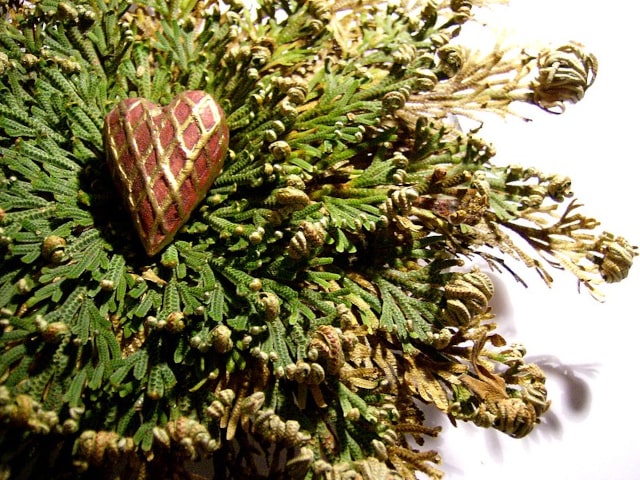
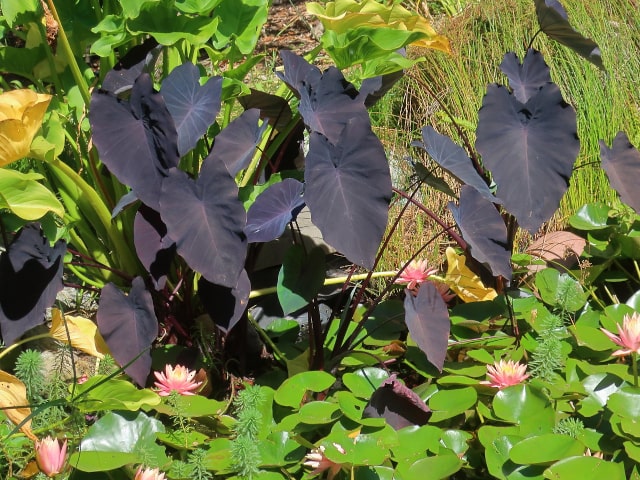
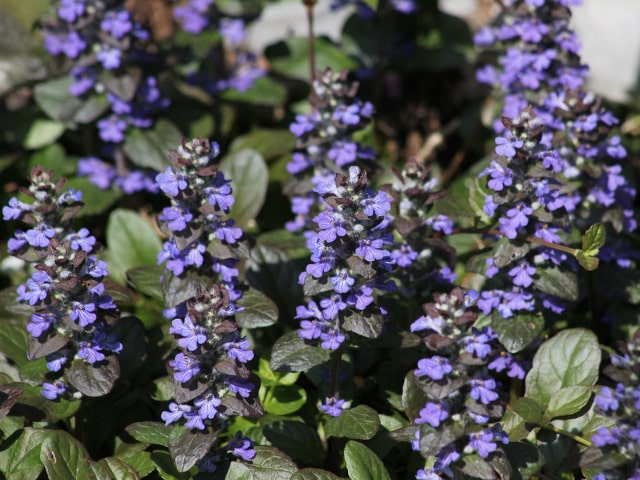
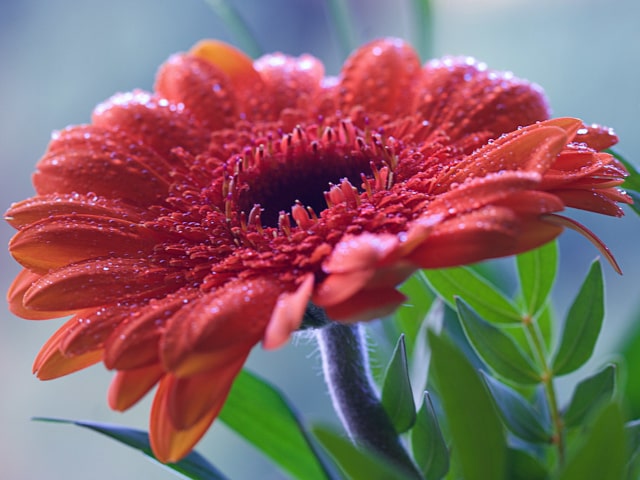
0 Comments